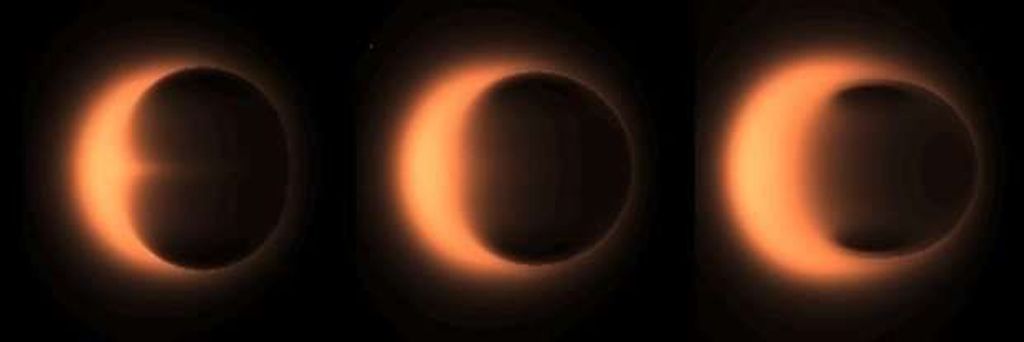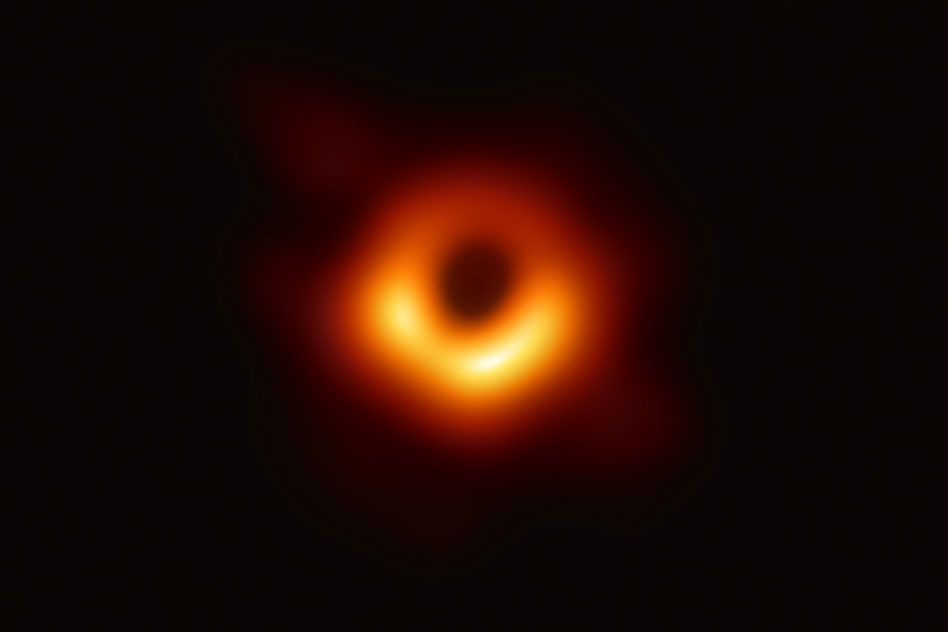Welcome to the doorstep of a black hole.
An international team of astronomers has caught the motion of hot, magnetized gas right near the event horizon of our galaxy’s central supermassive black hole, Sagittarius A* (pronounced “A-star”). This gas is likely part of a puffy disk that Sgr A* lazily feeds from. The disk provides a flickering light source, its steady glow sometimes spiking in flares that observers see in wavelengths from X-ray to radio.
While watching the star S2 whiz by the black hole this summer, astronomers working with the GRAVITY instrument on the Very Large Telescope Interferometer in Chile happened to see three bright flares — two of them nearly as bright as S2 in infrared — from near Sgr A*. Each flare lasted between 30 and 90 minutes and didn’t stay in place. Instead,
each appeared to race around the black hole at 30% the speed of light, tracing out about two-thirds of a clockwise loop that (uncertainties in the data aside) has the black hole at its center.
The behavior looks much like what a hotspot in the disk would do. Back in 2005, Avery Broderick (now University of Waterloo, Canada) and Abraham Loeb (Harvard) predicted that hotspots in the charged gas might be detectable, their orbits probing the gravitational landscape close to the innermost stable circuit around the black hole.
Changes in the flares’ polarization support that picture. The light is polarized due to magnetic fields in the disk, which serve as sheepdogs to the charged particles emitting the light. These magnetic fields are threaded through the disk, like big hula hoops around the black hole’s waist, Broderick explains. A hotspot lights up only a small part of the accretion flow, so as it circles around, the magnetic field direction in the lit-up region appears to spin — which is what the GRAVITY team saw.
As the team reports in the October Astronomy & Astrophysics, the data point to hotspots orbiting very close to the black hole’s event horizon, completing a pass every 45 minutes or so.
“This is an incredible measurement,” Broderick says. If astronomers see more flares doing the same thing, then “this presents an extraordinary opportunity to make precise tests of gravity in its most extreme environments: right about the horizons of black holes.”
Attendees at a galactic center workshop in Germany last week discussed the analysis at length but were cautious about the hotspot interpretation. “Everyone believes there is some kind of motion in a flare near the black hole,” says Sera Markoff (University of Amsterdam, The Netherlands), who specializes in accretion physics. Hotspots are the simplest solution, which is why the GRAVITY team went with them. But it's not yet clear if an alternative solution might be better. “Most of us believe that more complicated things are possible, such as motions associated with magnetic flares or jets.” (Astronomers have looked for jets from Sgr A* but haven’t seen anything definitive.)
Another concern is the angle at which we might be seeing the black hole’s disk. The GRAVITY team thinks the disk lies fairly face-on to our perspective. Others think the odds for that are statistically low, though, and radio observations have favored a more edge-on view. Upcoming radio results may provide some clarity on the disk’s inclination.
A more edge-on view might also create a better silhouette for the Event Horizon Telescope, the worldwide project trying to capture the “shadow” of Sgr A* and other supermassive black holes against the glow of their surrounding gas.
https://www.skyandtelescope.com/astrono ... t-horizon/





